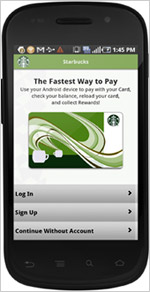 While many marketers -- including
Starbucks, Macy’s and Nordstrom -- are seamlessly guiding customers from one touchpoint to the next, others, even the likes of BMW and the Gap, are actually stranding them mid-transaction.
That’s the conclusion of Forrester, in a new report on managing messages across multiple channels.
While many marketers -- including
Starbucks, Macy’s and Nordstrom -- are seamlessly guiding customers from one touchpoint to the next, others, even the likes of BMW and the Gap, are actually stranding them mid-transaction.
That’s the conclusion of Forrester, in a new report on managing messages across multiple channels.
“Today’s consumer uses a wide range of touchpoints in
order to research, buy, and receive service from brands, and these touchpoints overlap and influence each other in ecosystems that are difficult to perceive,” writes Martin Gill, a principal
analyst with Forrester. “Too many firms focus on each touchpoint in isolation and fail to enable their customers to transition easily between them, even when the experience suggests to the
consumer that this should be possible.”
advertisement
advertisement
For example, while BMW’s Mini brand has a way-cool tool that allows potential buyers to try on “millions of potential
combinations of color, body style, and optional extras through its car configurator,” he writes, there’s no way for consumers to send that information to dealers. So if they want to
actually take a test drive, they need to start all over. And while Gap allows its shoppers to pick up online orders from any of its Gap, Old Navy, and Banana Republic stores, it falls down on returns.
Shoppers can only return a Gap product through a Gap store, for example, “leaving customers struggling to engage in a cross-touchpoint transaction that could potentially offer the brand an
opportunity to cross-sell.”
That’s frustrating, he adds, because consumers around the world have increasingly high expectations of cross-channel efforts. They expect to
be able to use the Web to make shopping in stores easier (ordering online for in-store pickup, for example), and for each store to be digitally enabled, allowing them to use online kiosks, like those
offered by Macy’s and Nordstrom. (In fact, Forrester says more than a quarter of shoppers in the U.S. have used such kiosks.) And increasingly, they also expect to have wi-fi access so that they
can use their smartphones to research purchases while in stores, including checking reviews and using social media sites.
Gills writes that Starbucks’ use of mobile as a link
between the digital and brick-and-mortar world via its “My Starbucks” mobile app, is simple and intuitive. “Starbucks uses geofencing to push relevant and timely offers to potential
shoppers in order to drive restaurant footfall. The “My Starbucks” app acts as a prepay payment device at the physical point of sale, using a QR code on the phone, and stores customer
loyalty data to encourage further engagement.”
In summary, he writes, marketers need to follow three basic rules: “Don’t try to please everyone; optimize the
journey rather than each single touchpoint; and manage the transitions.”